zanipolo
Banned
- Messages
- 2,071
- Reaction score
- 65
- Points
- 0
- Ethnic group
- Down Under
- Y-DNA haplogroup
- T1a2 - Z19945
- mtDNA haplogroup
- K1a4o
Follow along with the video below to see how to install our site as a web app on your home screen.

Note: This feature currently requires accessing the site using the built-in Safari browser.
No, it's not that easy if you look at the roots:
ŠRDN - "Sardinians"
ŠKLŠ - "Sicules"
If Shekelesh was related with Skythians, it'd have been spelled something along the lines of "ŠKT". You'd somehow need to explain how T becomes L in the root. Also, again the Scythians were a steppe people.
http://en.wikipedia.org/wiki/Tyrrhenians"Spard" or "Sard", another name closely connected to the name Tyrrhenian, was the capital city of the land of Lydia, the original home of the Tyrrhenians; it was referred to by the Greeks as "Sardis". The name preserved by Greek and Egyptian renderings is "Sard," for the Greeks call it "Sardis" and the name appears in the Egyptian inscriptions as "Srdn."[10]
ok, what about Sardis as origin of tribal name Sherdana/Serden...
http://en.wikipedia.org/wiki/Tyrrhenians
for my theory that doesnot change much, as I am convinced that Balkan Serbs (and identity of other Slavs) origin from European branch of I2 (and perhaps R1a) Serians, while sea peoples were an Asian branch of Serians or Cimmerians... the relationto Serians is extremely clear.... already statement of Bavarian geographer that "the state of Zeruiani was so big that all Slavs come from it" is clear indication of what I claim here...
and even though sea peoples are history of Asian branch of Serians,in wider scope they are part of history of Serians/Cimmerians and thus also of proto-Serbs and proto-Slavs... people who origin from Asian branches of Serians would be Kurdish Sorani, Pasthun Sarbans, and Chuvash (turkic people who has dominantly Slavic genetics and legend of origin from Sabirs - turkic tribe who are located in same place where Serboi of Caucasus were prior to turkic invasions of the area)
as for Sardinians I am sure that their I2a1 in distant history meant strong relationship with other I2 people.... same as their tribal name is clearly related to what I call haplogroup I tribal name pattern: Sardis, Sarbans, Serbs, Scordisci, Serdi, Suebi, Swedes...
Horvati means croissantThis zeruiani is this meant to be serb, while Horvati is meant to be craotion?
[/I]
I agree that the sardinians have a high % of the I haplogroup, but was it because they where illyric or due to etruscan migration?
Zeruiani stement was -
In the manuscript of the anonymous Bavarian geographer was written: "...Zeruiani (the Serbs), whose kingdom is so great, that from them all the Slav peoples came into being and are said to originate from them."
This is from the 10th century AD, why do you try to match something which is "young" for ita ancient association. Its clearly from someone without historical knowledge
sea peoples haplogroup
There are J2 Phoenicians in the later years of their empire. This was verified.
J2 is not old enough to have been the haplogroup of the Sea Peoples , then again , the phoencians did colonise most of the mediterraen . The where the pre - carthagians that battled Rome.
The ancestors of the Sea Peoples would have to have been J.
The 40% J2 population in Malta is a late arrival.
62% of Crete is J2
Was the veneti J2 only due to their trade within the levant?
The Sea Peoples seemed to have mixed with the earlier Caucasian races the Hittites, and Aryans, who were all J1.
R1a1a could only be the haplogroup of Indo-Aryan and Slavic languages not of all Indo-European speakers.Well, first off, the case for R1a1a being associated with early Indo-Europeans (or, at least, one early branch of Indo-European speaking peoples) is reasonably plausible. I think it's possible to argue for both genetic and linguistics, but one should be cautious to not mix things up because you make very different statements for very different times there. In my opinion, you can correlate genetics and archaeology, and you can correlate linguistics and archaeology (in particular, you can make statements when a certain word must have entered the vocabulary of a language, because it does conform to certain sound laws, but not to others), but you cannot directly correlate genetics and linguistics.
Secondly, I'm not convinced that the Proto-Slavs lived in the steppe, primarily because Proto/Common Slavic, although lacking maritime terminology, apparently has a lot terms for lakes and forests, which is not consistent with steppe peoples.
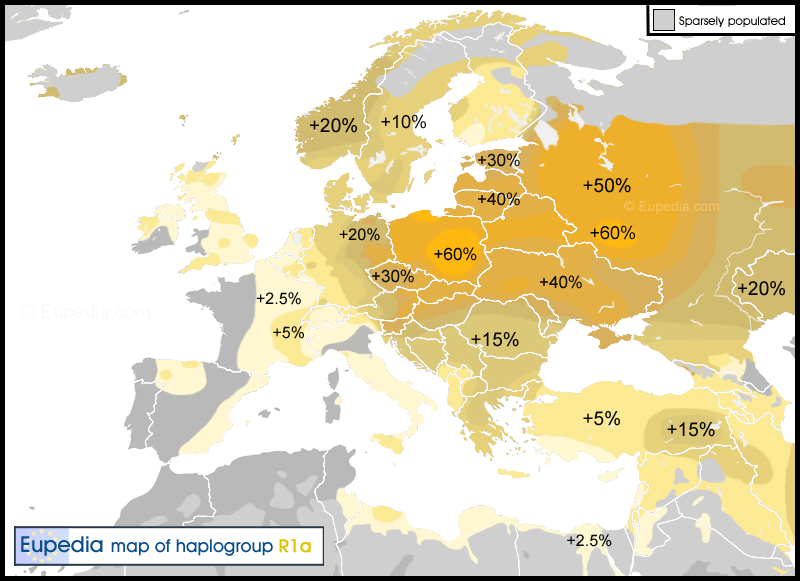
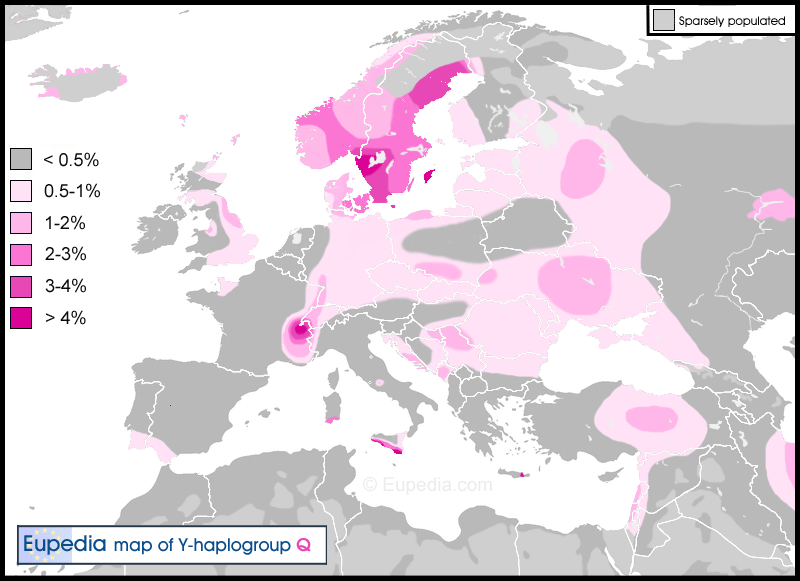
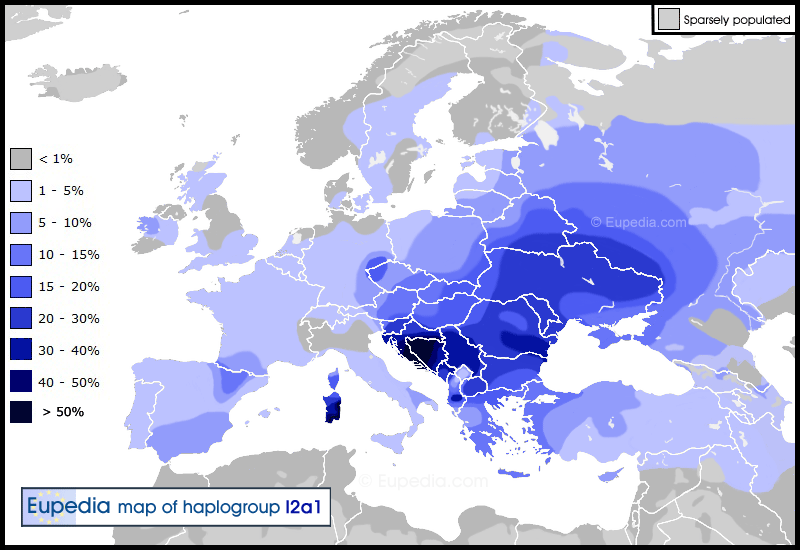

.svg/342px-Coat_of_arms_of_Serbia_(2004-2010).svg.png)
flag of Kurdistan also has crescent (moon)

Serbia has 4 crescents on coats of arms.....Serbia is not sampled much in existing databases of R1a but I am curious whether some deep-blue and green pins will appear there in future...especially because there are deep-blue pins in Ukraine, south Poland (white/west Croatia) and Germany (from what I could figure out white/west Serbia fom where Serbs come to Balkan was in Bohemia/Bavaria)
same as in Kurds it is white crescent on red backround (red and white are original Slavic colors - e.g. Croatian checkboard, polish flag...)
.svg/342px-Coat_of_arms_of_Serbia_(2004-2010).svg.png)
All Muslim countries have moons,
Turkish flags had 3 moon as Pakistans also,
Maybe Serbia is a Muslim and Turkish country also ????
Be more careful, cause misunderstandings may happen
turkic people are clearly not "moon" people...
their flags do not show moon, but moon with one or more stars...
so they can be "night" people and not "moon" people
in Slavic languages
"srp" = sickle, crescent

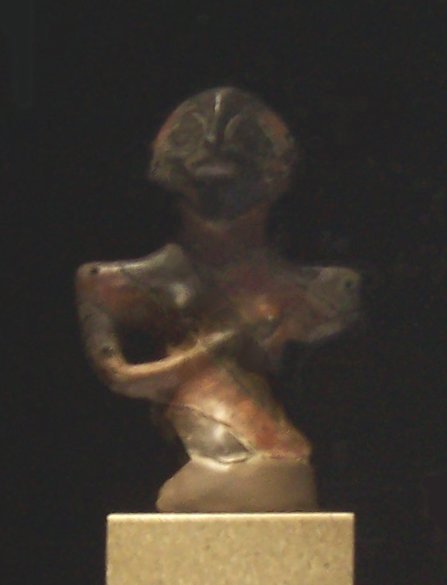
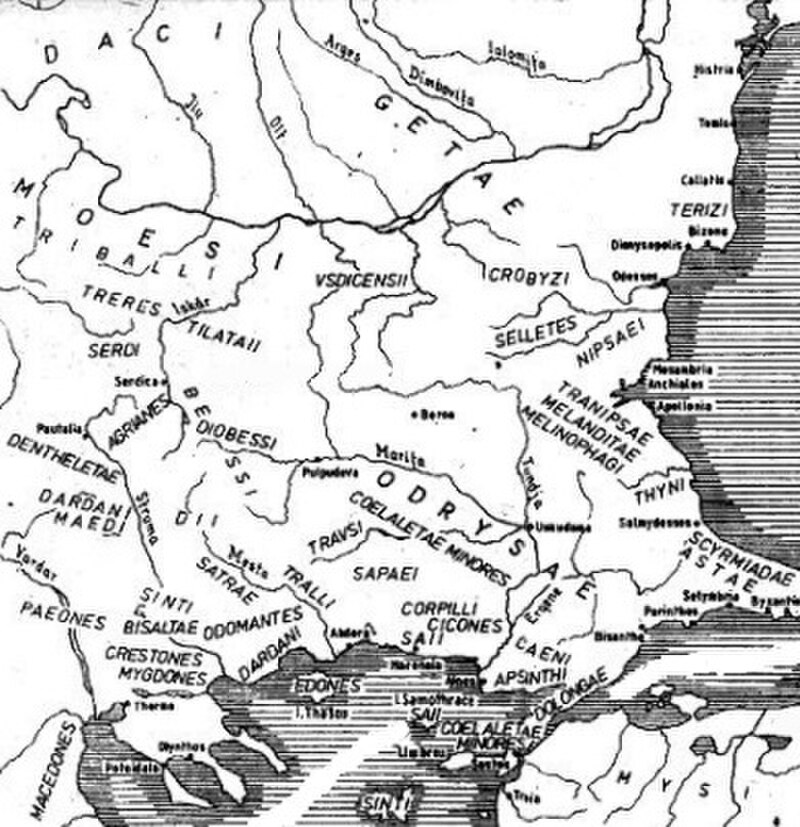
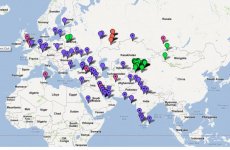 http://maps.google.com/maps/ms?hl=en...2&source=embed
http://maps.google.com/maps/ms?hl=en...2&source=embed| As FR Yugoslavia | |
|---|---|
| 1992 | Didn't participate |
| 1996 | 8th |
| 2000 | 3rd |
| As Serbia and Montenegro | |
| 2004 | 2nd |
| As FR Yugoslavia | |
|---|---|
| 1994 | Didn't participate |
| 1998 | 3rd |
| 2001 | 2nd |
| As Serbia and Montenegro | |
| 2003 | 3rd |
| 2005 | 1st |
| As FR Yugoslavia | |
|---|---|
| 1993 | Didn't participate |
| 1995 | Didn't participate |
| 1997 | 2nd |
| 1999 | 7th |
| 2001 | 1st |
| As Serbia and Montenegro | |
| 2003 | 1st |
| As FR Yugoslavia | |
|---|---|
| 2002 | Didn't participate |
| As Serbia and Montenegro | |
| 2003 | 4th |
| 2004 | 2nd |
| 2005 | 1st |
| 2006 | 1st |
http://en.wikipedia.org/wiki/Dagon
http://en.wikipedia.org/wiki/IsharaIshara (išḫara) is the Hittite word for "treaty, binding promise", also personified as a goddess of the oath.
In Hurrian and Semitic traditions, Išḫara is a love goddess, often identified with Ishtar.
The name is from a PIE root *sh[SUB]2[/SUB]ei "to bind (also magically)", char in Bulgarian "magical charming", also in Greek himas "strap" and Old Norse / Old High German seil "rope". Possibly also cognate is soul, and Welsh Gwen-hwyfar (Irish Find-abair, from Proto-Celtic *windo-seibaro- "white ghost", from a meaning "enchanted" of the extended root *sh[SUB]2[/SUB]ei-bh-). ishar (or eshar), oblique ishan-, the Hittite for "blood" is probably derived from the same root, maybe from a notion of "bond" between blood-relations (c.f. Sanskrit bandhu). The verb ishiya "to bind, fetter", "to oblige" is directly cognate to Sanskrit syati or Russian shyot with similar meanings.
Her astrological embodiment is the constellation Scorpio and she is called the mother of the Sebitti (the Seven Stars) (Seux, 343). Ishara was well known in Syria from the third millennium B.C. She became a great goddess of the Hurrian population. .... she was invoked to heal the sick (Lebrun).[1]
The Hurrian cult of Ishara as a love goddess also spread to Syria.
Ishtar (pronounced /ˈɪʃtɑːr/; Transliteration: DIŠTAR; Akkadian: ������������
; Sumerian ������������������) is the Assyrian and Babylonian goddess of fertility, war, love, and sex.[1] She is the counterpart to theSumerian Inanna and to the cognate north-west Semitic goddess Astarte.
Ishtar was the goddess of love and war, above all associated with sexuality.....
In the Babylonian pantheon, she "was the divine personification of the planet Venus".[4]
http://en.wikipedia.org/wiki/Zorya"She is depicted as a warrior goddess, fully armed and courageous, and was invoked to protect against death in battle with the prayer "Defend me, O maiden, with your veil from the enemy, from the arquebus and arrow..."[citation needed] She is a patroness of horses, protection, exorcism, and the planet Venus, and Slavs would pray to her each morning as the sun rose.[4] "
http://en.wikipedia.org/wiki/Tribe_of_AsherIn the Tanakh (also referred to as the Old Testament or Hebrew Bible), Dagon is particularly the god of the Philistines with temples at Beth-dagon in thetribe of Asher (Joshua 19.27), in Gaza (Judges16.23, which tells soon after how the temple is destroyed by Samson as his last act).
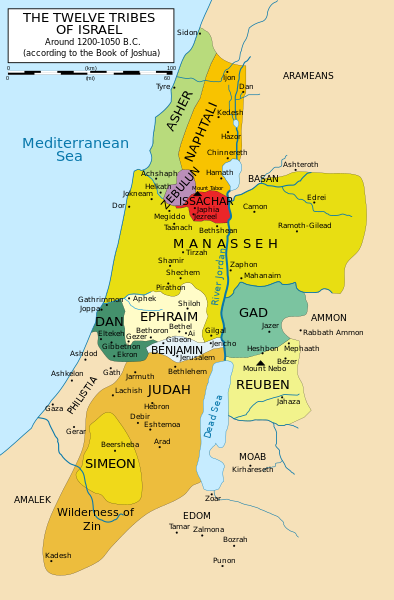
note that Zeruiani are widely interpreted as Serbs, but in fact that is in my opinion name of pre-Slavic people.... while Serbs are a border part of that stock... e.g. same like Zebulun tribe of Israel is on south border of tribe Asher....
this is logical comparison as Israel area was likely settled during invasion of sea peoples coming from north... and as legend says northerners made a conspiracy and united to invade south areas..... tribes of Israel are perhaps a set of colonies founded by various northern nations....




This thread has been viewed 135924 times.
